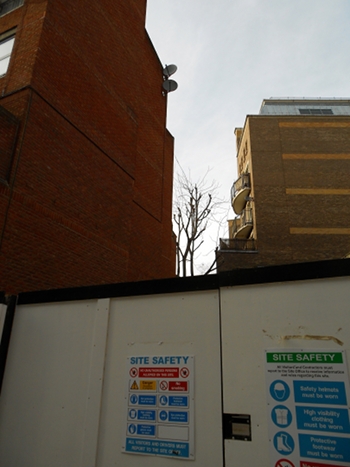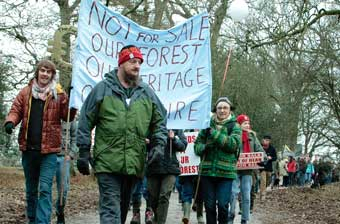Jonathan Hazell is one of the foremost Arboriculturists in the UK and a public face for the industry (You may well recognise him from the Television, recently appearing on the BBC’s One show to talk about Dutch Elm Disease). He is a trustee of the Arboricultural Association (www.trees.org.uk) and Chair of their ‘Media and Communications Committee’.
Tell me that I’m alone in becoming frustrated by bad practice in our everyday environment?
There are of course countless examples from outside my area of competence (a “favourite” is why is there so little space or provision for recycling in modern home designs – no big cupboard for empty plastic boxes or bottles, for crushed cereal packets or stacks of newspaper or for organic waste).
Why do new tree planting schemes in the public realm continue to frustrate so? There is a compelling body of evidence that shows how things could be done, even in car parks, but few on the ground examples of where it has been done right. (There are a number of authoritative voices in this area, including James Urban, FASLA, Urban Trees + Soils, Annapolis, Maryland, see his profile on Linkedin http://linkd.in/MBLd8J and David J. Nowak, Research Forester and Project Leader, U.S. Department of Agriculture Forest Service, Northern Research Station, Syracuse, NY 13210, dnowak@fs.fed.us). Also, why are some trees being retained when it is clearly apparent that they are going to be compromised by the new built form around them?
Designers need to consider a range of issues when thinking about new schemes, primarily the physical environment but also the wider picture – for example it’s a mistake to have tree bearing a succulent fruit located over a public seating area (because predictable fouling by crushed fruit, or by the odious cocktail consequent to ingestion by birds ought to be avoided) as much as it is unwise to have a tree bearing hard or large fruits immediately adjacent to the highway (again, the predictable hazard that such fruits pose to pedestrians young and old, cyclists and passing cars can simply be avoided).
Some of the issues that ought to be considered before thumbing through the nurseryman’s catalogue include
- the available soil volume, and how it is to be contained
- soil quality, and how it can be sustained
- irrigation, and how pollution can be prevented
- protection for the tree’s base, stem and canopy
- the clearance that the mature tree will require from adjacent structures
- avoiding disruption of services, both underground and overground
- lines of sight
- hard surfacing over the tree’s roots
- the tree’s growth habit and ultimate shape
- the shade that the tree may cast
- the place of the tree in the landscape – does it add to or detract from the overall quality
- pest and disease profile
- the implementation – its worth paying the going rate for a decent job
- the provenance of the plant material – will it withstand the UK climate?
But don’t be scared – it is perfectly possible to plant large species trees in the right place.
If more thought were given prior to planting perhaps the following might be avoided?
If the implementation was better perhaps these sights would become a thing of the past?
Plane – guy wires left on
It can be done really well after all:
And, if there were better, or perhaps clearer and more accessible guidance upon tree retention, then the following might also be avoided?
If the implementation was better perhaps these sights would become a thing of the past?





































This is so useful. The other articles are as well. I haven’t looked at your site I am ashamed to say since the govt tried sell the forests and this huge bank of material is invaluable. It highlights just how many people and organisations we have in England dedicated to trees
I agree almost totally, however there is one point in which I would have to disagree and that is the attitude towards management of trees in the urban context, the two examples a reduction (not the best example I have to say) and a Plane pollard (also not the best example)
There is nothing wrong with reduction or pollarding in any context, it has been practised for many thousands of years, often very badly it has to be said, but that negative stance toward pruning is largely over emphasised and drives a wedge between industry members/groups.
There is a myth being banded about that pruning is negative for the tree, this is not the case at all, good pruning is an art and a science and one should ensure that the distinctions are made whenever comments are made toward pruning, especially in such a wide based audience such as SOW.
Every opportunity should be taken to emphasise good practice, suggesting no practice at all makes arbs an enemy and the public perceive all we do as a negative. I have personally dedicated 25 years of hard labour to managing trees in the urban fringe, retaining (by reduction and pollarding) many trees that where either A) unsuitable for the plot but of immense value to local flora and fauna or B) structurally compromised to such an extent 99% of arbs would have felled the tree rather than attempt to retain.
Pruning is a far better option in nearly all cases than is the fell and replace option, which is for reasons illustrated in the article going to see the disappearance of large diameter trees in the Urban context, and with it the other life that lives among the older trees, and the connection to old growth in the urbanites mind.